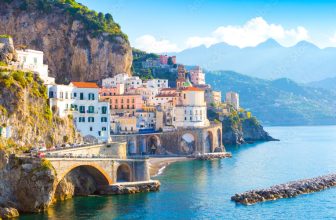
The Intihuatana, or ‘Hitching Post of the Sun,’ is a testament to Inca astronomy. Named after the sun, the stone pillar points to the four cardinal points. Its shadow vanishes at noon on the equinox. The Sacred Rock, or ‘Three Windows’, is another important feature. This stone pillar also marks the location of the sun.
Intihuatana (Hitching Post of the Sun)
Visitors to Machu Picchu should not miss the Intihuatana, or the “Hitching Post of the Sun,” carved into a rock. The Incas believed in the power of supernatural forces and used these carved rocks to track the sun’s path throughout the year. This carved stone is similar to an observatory, but it’s far more elaborate and beautiful.
The Intihuatana stone is located near the Hanan section of Machu Picchu. It is a pyramid-shaped hill that you can reach by descending two sets of steps. This is one of the most iconic sites of Machu Picchu, so be sure to visit this important site. It’s open only from 7 am to 10 am.
The Intihuatana stone at Machu Picchu is a significant site for astronomers. The ancient Incas built the Intihuatana pillar to hitch the sun at the equinoxes. On March and September 21st, the midday sun will rise directly over the pillar.
Sacred Rock
The Sacred Rock, located between two stone shelters, is considered spiritually important to the native Inca people. The Inca people have left behind a number of artifacts to protect the sacred rock. Among them is a carved stone monolith. It has a symbolic meaning for them and can still be visited today. It has been revered as a place of worship by many people. Its location in the sacred city of Machu Picchu is a wonder.
Built on a mountain peak at 8000 feet, the citadel of Machu Picchu is one of the modern wonders of the world. This self-contained city was home to the Inca people and had many features that modern-day visitors can appreciate. The citadel contains astronomy observatoriums and residential quarters for nobility and common people. The stone walls of the citadel are impressive examples of Inca masonry, requiring the stones to be fitted tightly without mortar.
Near the Huayna Picchu trail, the Sacred Rock has an eerie, almost mystical appearance, and appears to be replicated the Yanatin Mount. Despite its small size, it is a stunning example of Inca architecture, and you are sure to see some beautiful ancient ruins while visiting Machu Picchu. Despite its remote location, the city was built in an impossible place.
Intihuatana (Three Windows)
Intihuatana, or “place of the sun tied” in Quechua, is a major mystery of the Inca culture. It is a prism-shaped monolith that marks the four cardinal points. Scientists have been studying this astronomical stone since 1877. The Intihuatana was a tool used by the Incas to calculate time and the position of the sun.
The Intihuatana stone is located at the top of a hill and is believed to have been used as an astronomic clock and calendar. This temple is the oldest foundation at Machu Picchu. Hundreds of men pushed heavy stone blocks up the hill to build the structure. Upon completion, the three windows would indicate the sunrise location.
The main ruins are located in the first zone. The Intihuatana (Three Windows) and the Temple of the Sun are located there. The popular district was the home of lower class people, with simple houses and storage buildings. The royalty sector, or nusta district, was the home of the higher class. The royal sector is a cluster of houses on a slope. Nustas lived here in trapezoid-shaped rooms. The Monumental Mausoleum is a vaulted structure that contained a carved statue. Despite its small size, this structure has an intricate interior adorned with drawings and paintings.
Condor temple
The Condor temple is a beautiful Inca structure found in the center of the famous Machu Picchu site. It has a large stone caving in the shape of a condor. If you visit it, you’ll be able to appreciate how the Incas carved out their edifices and monuments. There is no better way to learn about their culture than to visit this magnificent site.
If you’ve never been to Peru, you’re in for a treat. The ancient Incas carved out their stone structures to imitate the natural landscape of the Andes. The Condor temple is one such example, as it looks like the silhouette of a majestic old condor. This structure is located in Machu Picchu, Peru. It is the most popular Inca temple, and visitors from all over the world come to see it.
The Incas believed in a religious system known as the Andean Trilogy. They believed that there was an upper world and a lower world, and each of these had a God animal representing it. The Condor temple was the upper world’s temple, and its cave may have served as a prison. Spanish chronicler documents are not available, so we don’t know exactly what the condor temple was used for.
Intihuatana (three-dimensional bird)
The Intihuatana is the best example of a three-dimensional bird, and it is the only structure of its kind to survive the Spanish conquest. The other buildings at Machu Picchu are temples, the Sacred Rock and the Temple of the Sun. The site was home to the Inca city settlers. There are over 200 structures at the site, divided into two areas, the urban and agricultural sector. The Sacred Plaza contains the Intihuatana, which represents the sun, and the main temple.
Intihuatana, or three-dimensional bird, was carved out of natural bedrock. The Incas were an agricultural society, and the high elevation of the site meant that they could successfully sow seeds. Despite the fact that the Intihuatana is not a real bird, visitors often claim to sense energy when walking past it.
The Intihuatana stone was used as an altar and a focal point for religious ceremonies. According to ancient Inca legend, the Intihuatana stone contained the god of force. The Incas believed that the stone would break when the deity it held broke. Interestingly, the Intihuatana is also the main deity of the Incas, and the Incas were aware of the connection between celestial bodies and astronomical phenomena.
Condor temple is a prison complex
The Temple of the Condor is part of a guided tour of Machu Picchu. You can learn more about the history and purpose of this structure from your guide. You can also learn about the mummy found under the wings of the condor. The complex also contains niches made for humans. The condor was a symbol of protection in the Andes. It is believed to have been used as a prison at one point.
The complex is subterranean, but can also be visited on the ground. Historians believe that this is a prison where Incas held criminals. Many of the people were imprisoned here, and their punishment was death, or sacrifice at the Temple of the Condor. It is a haunting and fascinating sight to visit. In addition to its prison function, the Temple of the Condor also contains a carved-out condor head.
A huge rock formation stands as the Temple of the Condor. The Condor is the largest bird in South America, and was considered sacred by the Incas. It is believed that this creature would gather clouds in order to make rain that would fertilize the earth and grow crops. Inside, the Condor Temple contains a mummy that is believed to have been buried there. The Incans believed the condor’s feathers produced rain.
Machu Picchu entrance tickets
If you have decided to visit Machu Picchu for the first time, you may be wondering where you can get Machu Picchu entrance tickets. Unlike many tourist attractions, you cannot buy tickets at the entrance to the mountain site. However, you can purchase them directly from the government website. This website is operated by the Ministry of Culture. You may have to wait a few minutes while it loads. The website will then display information in English.
Tickets to Machu Picchu are available for purchase online. You can use Visa or MasterCard to pay for the entrance tickets. You can use another credit card, such as American Express, if you wish to pay by check. Once you’ve made your purchase, you’ll receive an email containing your entrance ticket. When you arrive in Cusco, make sure to arrive at least a week before your visit so you’re not left wondering how to get into the site.
When buying your Machu Picchu entrance tickets, be sure to take your passport with you. The Ministry of Culture’s office said that children under 8 years old are allowed to visit for free if they show a valid photo ID. For foreign undergraduate students, you’ll need a valid photo student ID card from your university. Be aware that tickets can sell out during high season. Purchasing them online in advance can save you time and money, but you’ll need to make sure you’ve got the right tickets in advance.






